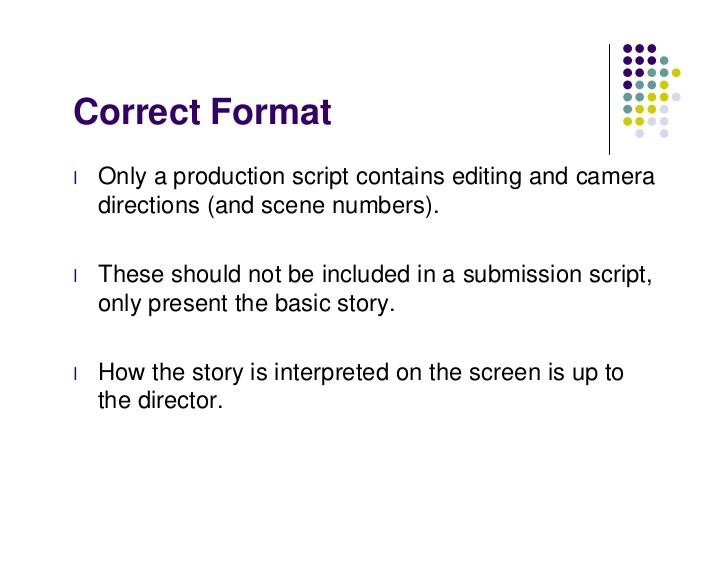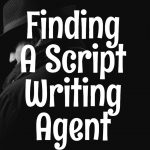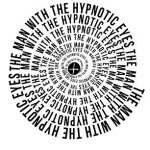Formatting Directions
While you should never add too many formatting directions to a spec script, there are times as a scriptwriter that you do need to add a few flourishes to the action. For example, if you’re writing a fight scene that you want to emphasis the sounds then you can write:
A right hook SMASHES into Bill’s face.
The capitalization draws attention to the sound. Be careful not to overuse this technique though as it can be distracting.
Off Screen
If there is a scene in your script in which a character is talking, but you do not want him to be onscreen then you would format that like this:
BILL (OS)
Voice Over
A voice over is used when you want a character in your script to narrate or verbalize their thoughts. This is often used to open a film or stitch scenes together. You would also use a voice over for a telephone conversation when just one character is on camera. The voice over format is much the same as the off screen format.
BILL (VO)
Actor Directions/Wrylys
I mentioned in another article on the site that these are to be avoided as much as possible. If you use this technique too much it will anger both directors and actors who will see it as a writer telling them how to do their job. If you write your dialogue well these should not be needed at all often as the surrounding dialogue and action should make it clear how the line should be said. If you do need to use this technique then format it as followed:
![]()
Flashbacks and Dream Sequences
A lot of scriptwriting books will tell you that flashbacks and dream sequences as shoddy writing, and the sign of a poor script. However if you use these well and sparingly they can add a new dimension to a character and the story.
There are a few different ways to write these into a script, but the most common way is to add them to the scene heading. E.G:
![]()
And then go back to present times with:
![]()
Camera Directions
Much like actor directions, camera directions be avoided as much as possible. You are a scriptwriter, not a director. Instead of adding directions like ZOOM IN and CLOSEUP try to subtly work these into your action description.
![]()
This almost dictates that there has to be a close up on Jennifer’s eyes without you telling the director how to do his job. Remember the old scriptwriter’s adage, show don’t tell.
Please CLICK HERE To Check Out The Top 5 Online Scriptwriting Courses



